Asbestos Cement
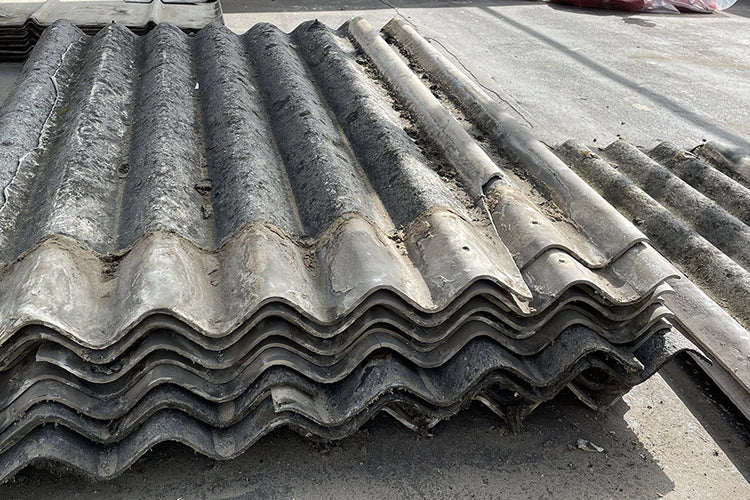


Written by Tom Yates . Edited 24th April 2024
Fact Checked by William Wright, NEBOSH
Overview
Asbestos cement was a widely used construction material throughout the 1900s, Its most common use was in the form of corrougated roofing sheets on garage roofs. Asbestos cement sheeting was used to construct walls of garages or as internal fireproof boarding in homes.
When people refer to asbestos cement they are usually meaning cement roofing sheets or boarding, however asbestos cement was moulded into a wide variety of products. The term simply means any material where a mix of cement and asbestos was used to construct it - some examples include asbestos flu pipes, waste pipes and soffits. We’ve created a seperate guide for each of these products so click on the links read more about them
What do asbestos cement sheets look like?
Like most asbestos-containing materials, asbestos cement is indistinguishable from cement products which do not contain asbestos.
Cement (with or without asbestos) is often grey in colour and smooth in texture . It can be found on roofs, walls & ceilings all over the UK in homes, garages & commercial properties.
Most of us will be familiar with the "wavey" corrugated asbestos sheets when we see them. A glance at the pictures below will bring feelings of familiarity no doubt, as they can be seen everywhere all over the UK.
There's only one way of knowing for sure if the cement sheeting you're looking at contain asbestos, and that is to have the material tested in a laboratory. If the building was built before 1999 and you spot a wavey corrugated sheet or a flat thin sheet cladded to a wall it is recommended that you assume that it may contain asbestos.
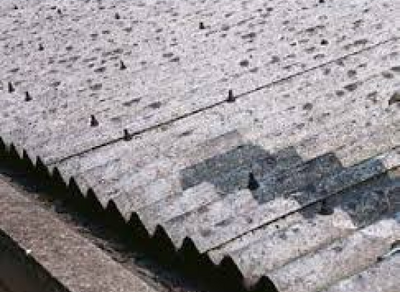
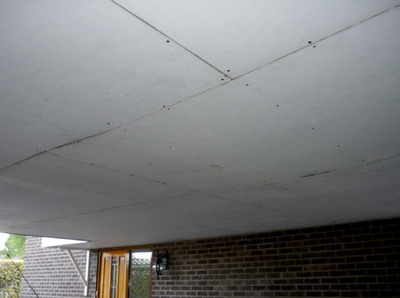
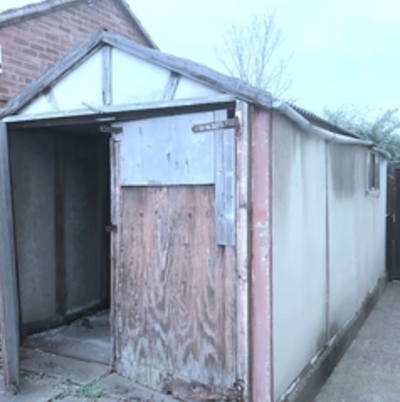
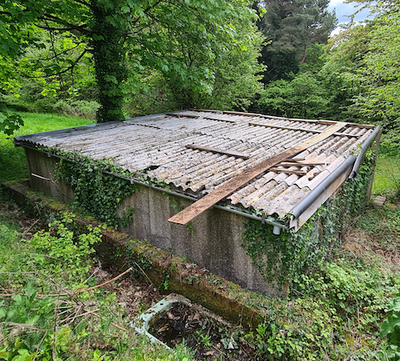
Fact Sheet
Identifying asbestos cement sheets
Here are some frequently asked questions about identifying asbestos cement, if you have any questions which we've missed in this article please contact us and one of our asbestos specialists will respond to your question.
What colour are the sheets?
+
-
Asbestos roofing sheets are natrually grey in colour, however over the years the roofing may be covered with dirt or moss giving it a darker colour.
Do all corrugated cement sheets contain asbestos?
+
-
No, newer cement sheeting with the same wavey affect doesn't contain asbestos (anything manufactured post 2000 is considered safe)
However anything pre-2000 could quite possibly contain asbestos.
How do you take a sample of cement sheeting?
+
-
Taking a sample of cement roofing sheets is relatively straight forward. You should wet the material down using a hosepipe or spray bottle to ensure the product is saturated in water (this helps suppress any dust released when the material is disturbed). Then using a pair of pliars you can snap off a small easily accessible corner or edge of a sheet. (of course its important to ensure you're wearing the relevant PPE to make sure you're protected when doing so)
How are they affixed?
+
-
Asbestos cement sheeting is usually bolted down to the roof timbers using nut a bolt. You can usually see the bolt sticking up through the sheeting.
Asbestos boarding on the other hand is usually affixed using nails or screws.
Where is it commonly found?
Asbestos cement sheeting is most commonly found on the roofs of garages and outbuildings built pre-2000. It was used heavily in residential properties and on commercial warehousing.
Asbestos cement boarding was commonly used was the walls of external garages and also used to fireproof / insulate internal garage walls and ceilings.
How dangerous is asbestos cement?
Asbestos cement sheets are considered a lower-risk asbestos-containing product. This is due to the material makeup. With the material being heavily bonded and non-friable (Friability is the tendency to break down, chip or crumble under pressure or as a result of abrasion) this means when the product is disturbed or broken there is a minimal release of asbestos fibres.
Whilst asbestos cement is considered lower-risk by the HSE (Health & Safety Executive)[1]this doesn't mean that the product isn't harmful and certainly doesn't mean it is safe to remove without protection. If you intend to work on asbestos then ensure you wear appropriate RPE & PPE.
We would always recommend getting an asbestos removal company in to do any removal/maintenance on your asbestos sheeting.
The facts about asbestos exposure
Asbestos exposure can lead to diseases such as asbestosis, lung cancer, and mesothelioma. These diseases often have a long latency period, meaning symptoms may not manifest until many years after exposure.

Tom Yates
03/01/2023

Is a license required for removal?
According to the HSE an asbestos license is not required to remove asbestos cement. However in certain circumstances a notification (NNLW) will still be required (for example on larger / higher risk projects)
Asbestos cement statistics in the UK
We carry out thousands of tests per year, and as such we have accumulated an extensive data set that we can call upon. According to our data around 9% of the samples we test are cement sheeting samples. Of those tested, a whopping 64% of the samples came back with a positive result (containing asbestos).
If we are to generalise this data we could assume that if you find a cement sheeting on your property there is a 67% chance that it contains asbestos. Regardless of the stats you can never assume the material is non-asbestos contain and so you should always exercise caution.
Of those tested, 67% of textured coatings came back with a positive result.
(Results from samples sent to Asbestos Sampling in 2023)
Frequently Asked Questions
Can you board over asbestos cement boarding?
+
-
Whilst boarding over asbestos cement boarding may be possible it certainly isnt recommended as it will be very difficult to affix the new boards without disturbing the older asbestos containing boards (unless a free standing frame is able to be built). Even so, by boarding over asbestos you’re essentially only covering it up. One day an unsuspecting home owner or tradesman may drill through the new boarding and hit the older asbestos containg boarding behind it completely unaware of its location. As such we always recommend having cement boarding removed by qualified asbestos removal specialist.
Can I Remove It Myself?
+
-
If you are the owner of the property and it is classed as a domestic dwelling then there are no laws preventing you from removing the asbestos cement yourself, however, we would always recommend instructing professionals to carry out any removal works for you to protect your health.
If you are an employee or the property is classed as non-domestic or commercial then you are bound by the laws of the HSE. You may be able to remove them yourself providing you have relevant training and experience in doing so. It's worth checking the HSE guidance on this to ensure you're not contravening any health & safety laws.
Can I leave it in situ?
+
-
If your asbestos cement sheeting or boarding is in good condition and not deteriorating then you are fine to keep it in situ. It won't be causing any harm as the material is heavily bonded and sealed by the cement.
As a precaution you may want to apply new coatings of paint / encapsulate it every few years to maintain its condition and keep it all sealed.
However, if you need to disturb the material then encapsulation isn't going to help.
How to dispose of asbestos cement sheets?
+
-
To dispose of asbestos in line with legislation the boarding should be bagged up using UN-certified asbestos waste bags. The material should be first put into the red bag which is then sealed using heavy-duty tape to create an air-tight seal. The clear bag should then be placed inside the red bag and again sealed with tape. This technique is called double-bagging. These bags can then be taken to the hazardous waste skip at a local waste recycling facility.
References / Citations
- 1. "A9-A36 - Asbestos Essentials", Health & Safety Executive [view source] . Retrived 6th August 2023
Quick Links
Full PPE Included
Full Asbestos Testing Kit
Test for asbestos yourself using one of our kits
- Results within 24hrs
- Tested at UKAS Accredited Lab
- Instructions & PPE Included
Want to learn more?
He's some other interesting articles we've written:
What is AIB / Asbestos Insulation Board
Get an Asbestos Removal Quote
How Much Does Asbestos Cost To Remove?


